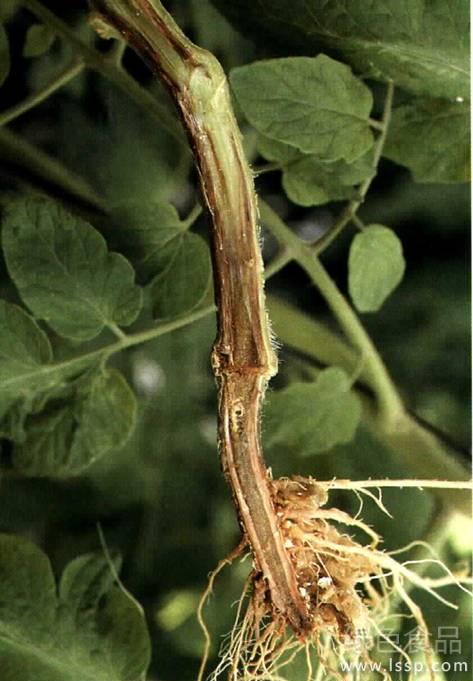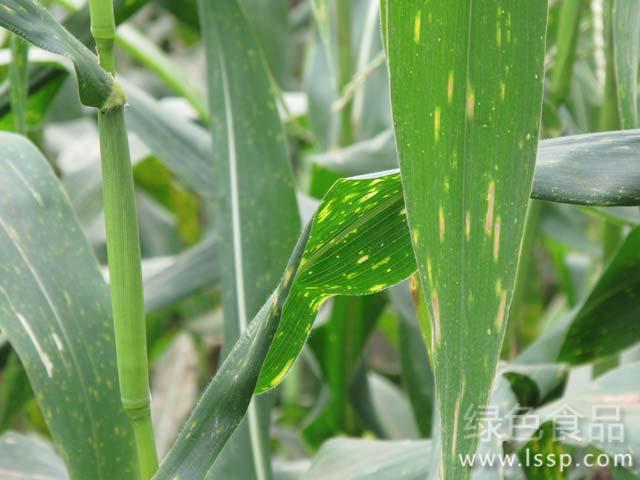How to solve the problem of Brown and death of Tomato how to Control Tomato Fusarium Wilt
Due to continuous cropping, tomato wilt is aggravated year by year, which not only reduces the quality and yield of tomato, but also affects the economic benefits of growers. In production, the field symptoms and occurrence regularity of tomato Fusarium wilt should be mastered, correctly identified, and comprehensive control methods should be adopted, such as rotation, soil disinfection, selection of disease-resistant varieties, seed disinfection, strengthening fertilizer and water management, selection of suitable chemicals and so on.

Fusarium wilt of tomato
1. Characteristics of symptoms:
Fusarium wilt of tomato begins at the flowering and fruiting stage. at the beginning of the disease, a sunken area appears on one side of the tomato stem from bottom to top, causing one side of the leaves to turn yellow, brown and then withered; some tomato leaves turn yellow; others start from the leaves near the ground and gradually spread upward, except for several intact pieces at the top of the tomato. The diseased stem was cut open and the vascular bundle turned brown. When the humidity is high, the pink mildew layer is produced in the tomato disease, that is, the conidiophores and conidia of the pathogen. The progress of Fusarium wilt of tomato is slow, and it usually takes 15 mi 30 days to die.
Second, the regularity of the disease:
It is possible to live saprophytic life by overwintering with mycelium or magnolia in the soil or attached to seeds. Generally invade the host from the young root or wound, enter the vascular bundle, block the catheter, and produce the toxic substance fusanisin, which spreads and causes the leaves of tomato diseased plants to wither and die. The pathogen spread through water flow or irrigation water, the soil temperature was 28 ℃, the soil was moist, continuous cropping, transplanting or intertillage caused a lot of injuries, and the disease was serious in tomato plants. In addition, the wound caused by acid soil and nematode feeding is beneficial to the occurrence of the disease. The disease progressed slowly under 21 ℃ or above 33 ℃.
3. Prevention and control methods:
The main results are as follows: (1) after more than 3 years of rotation, the organic fertilizer should be fully mature, and the formula fertilization technique should be adopted to increase the potassium fertilizer properly to improve the disease resistance of tomato plants.
(2) resistant tomato varieties such as Sukang 5, Xi'an Dahong, Shuzao 3, Yukang 4, Qiangfeng, Wanhong 1 and Mansi were selected.
(3) using new soil to raise seedlings or bed soil to disinfect. Mix well with 50% carbendazim wettable powder 8mi 10g per square meter of bed, add Weir soil 4ml 5kg and mix well. First remove 1 peg and 3 medicine soil on the border surface, then sow, and then cover the rest of the medicine soil on the tomato seeds.
(4) disinfect the seeds, soak the seeds with 0.1% copper sulfate for 5 minutes, wash them, accelerate germination, and sow seeds.
(5) at the initial stage of the disease, 50% carbendazim wettable powder or 36% methyl thiophanate suspension 500 times liquid, in addition, 12.5% carbendazim solvent 200 times solution can be used to irrigate the root, 100 ml of good solution per tomato, once in 7-10 days, 3-4 times continuously.
- Prev

How to control corn leaf blight caused by big and small leaf blight
How to control corn leaf blight caused by big and small leaf blight
- Next

Reproductive habits of Jerusalem artichoke
Crops are generally inseparable from a good soil environment, suitable climate, sufficient water. But Jerusalem artichoke is different. It is not only cold-resistant, drought-resistant and wind-sand-resistant, but also has strong fecundity and strong ability of regeneration. Even if it encounters abnormal extreme weather, the stems and leaves on the ground die, as long as the underground stems are not exposed.
Related
- Fuxing push coffee new agricultural production and marketing class: lack of small-scale processing plants
- Jujube rice field leisure farm deep ploughing Yilan for five years to create a space for organic food and play
- Nongyu Farm-A trial of organic papaya for brave women with advanced technology
- Four points for attention in the prevention and control of diseases and insect pests of edible fungi
- How to add nutrient solution to Edible Fungi
- Is there any good way to control edible fungus mites?
- Open Inoculation Technology of Edible Fungi
- Is there any clever way to use fertilizer for edible fungus in winter?
- What agents are used to kill the pathogens of edible fungi in the mushroom shed?
- Rapid drying of Edible Fungi

